Teaching Materials (For university lecturers or educators who need resources to use in classroom or lab)
Teaching Materials (BMC Lab)
Building materials & constructions is one of fields of civil engineering and to describe the basic concepts. This subject is identified the various components of building, various types of materials used in construction industry and their manufacturing processes. Building materials and construction lab includes sieve analysis of aggregates, specific gravity of aggregates and cement, normal consistency of portland cement, setting time of cement, compressive strength test of cement, slump test and soundness of portland cement.
This following equipments provides for BMC lab:
-balance & weight
-sieve set with cover and pan (ASTM Sieve)
-Vicat Apparatus
-Le Chatelier flask & mould
-Concrete compression test
This following equipments provides for BMC lab:
-balance & weight
-sieve set with cover and pan (ASTM Sieve)
-Vicat Apparatus
-Le Chatelier flask & mould
-Concrete compression test
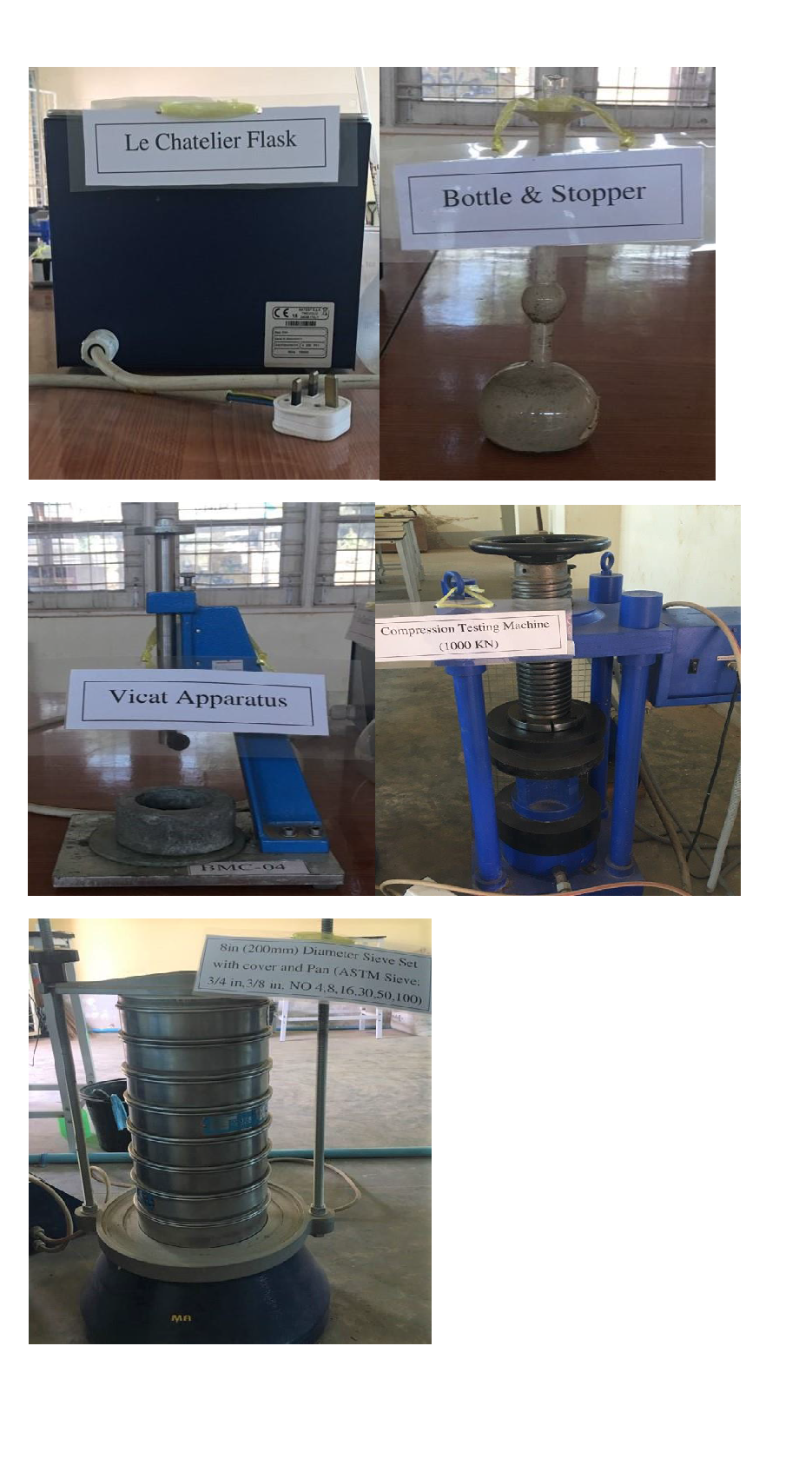
Teaching Materials (surveying)
Students can find the elevations of the given points with the respect to a given datum and can measure angles both horizontally and vertically by using survey instruments.
The following instruments provides for surveying:
• Level
• Theodolite
• Total Station
In addition,
• Tripod
• Measuring Tape
• Ranging Rod
• Stud
The following instruments provides for surveying:
• Level
• Theodolite
• Total Station
In addition,
• Tripod
• Measuring Tape
• Ranging Rod
• Stud
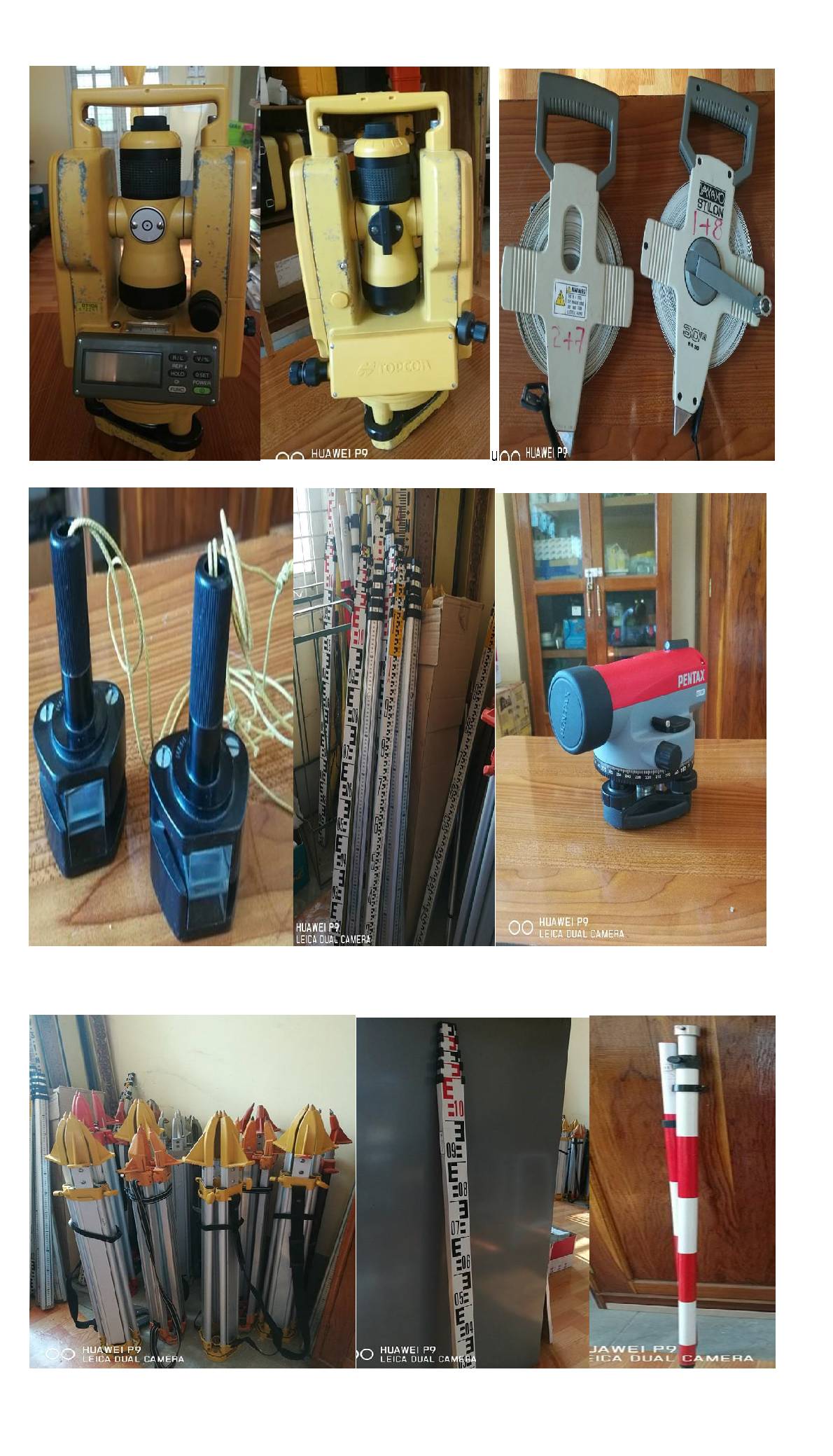
Teaching Materials (civil engineering workshop)
Civil Engineering Workshop help to be familiar the student with the handling tools and practise the student to use skillfully concerned with masonry works and carpentry works.
The following tools are provided the civil engineering workshop;
- Cement Leveling Tools
- Hammer & Chisel
- Joint for Pipe
- Pan
- Saws
- Spirit Level
- Square Trowel
- Square and Measurement Tapes
- Steel Bars
- Tools on Stand
- Trowel
- Vices
The following tools are provided the civil engineering workshop;
- Cement Leveling Tools
- Hammer & Chisel
- Joint for Pipe
- Pan
- Saws
- Spirit Level
- Square Trowel
- Square and Measurement Tapes
- Steel Bars
- Tools on Stand
- Trowel
- Vices
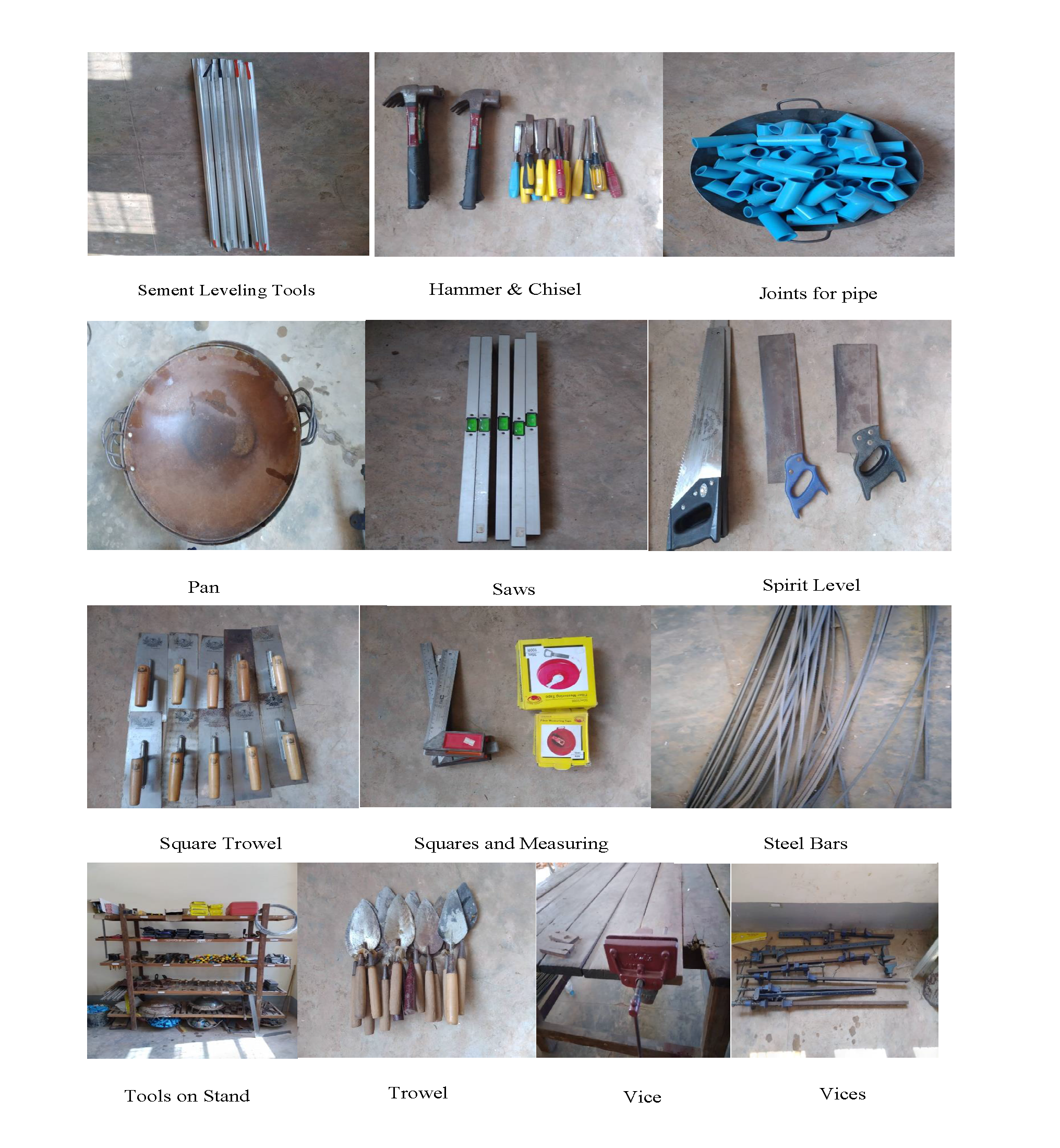
Teaching Materials (fluid mechanics )
Fluid mechanics test and measurement equipments, trainers and laboratory test help to provide the students the most complete solution for education and training purposes.
The following equipments provides for basic fluid mechanics lab:
1. Hydrostatic Pressure
2. Fluid Properties
3. Dead Weight Calibrator
4. Bernoullis’ Theorem Demonstration
5. Laminar Flow Demonstration
6. Osbrone-Reynolds Demonstration
In additions,
Hydraulic Bench
Balance and Weight
Trainers
1. Hydrostatic Pressure
Objectives
The objectives of this experiment are twofold:
To determine the hydrostatic force due to water acting on a partially or fully sub-merged surface;
To determine, both experimentally and theoretically, the center of pressure.
2. Dead Weight Calibrator
Objectives
The objective of this experiment is to calibrate the Bourdon gauge, which is used to measure gauge pressure…The standardizing pressure is developed by loading with standardized weights a vertically arranged ram which works in a cylinder with oil.
3. Fluid Properties
Objectives
To determine the density of fluid using measuring cylinder.
To determine the density of water, oil and engine oil.
4. Bernoullis’ Theorem Demonstration
Objective
The objective of this experiment is investigate the validity of the Bernoulli equation when it is applied to a steady flow of water through a tapered duct.
5. Osbrone-Reynolds Demonstration
Objective
The objective of this lab experiment is to illustrate laminar, transitional, and fully turbulent flows in a pipe, and to determine under which conditions each flow regime occurs.
The following equipments provides for basic fluid mechanics lab:
1. Hydrostatic Pressure
2. Fluid Properties
3. Dead Weight Calibrator
4. Bernoullis’ Theorem Demonstration
5. Laminar Flow Demonstration
6. Osbrone-Reynolds Demonstration
In additions,
Hydraulic Bench
Balance and Weight
Trainers
1. Hydrostatic Pressure
Objectives
The objectives of this experiment are twofold:
To determine the hydrostatic force due to water acting on a partially or fully sub-merged surface;
To determine, both experimentally and theoretically, the center of pressure.
2. Dead Weight Calibrator
Objectives
The objective of this experiment is to calibrate the Bourdon gauge, which is used to measure gauge pressure…The standardizing pressure is developed by loading with standardized weights a vertically arranged ram which works in a cylinder with oil.
3. Fluid Properties
Objectives
To determine the density of fluid using measuring cylinder.
To determine the density of water, oil and engine oil.
4. Bernoullis’ Theorem Demonstration
Objective
The objective of this experiment is investigate the validity of the Bernoulli equation when it is applied to a steady flow of water through a tapered duct.
5. Osbrone-Reynolds Demonstration
Objective
The objective of this lab experiment is to illustrate laminar, transitional, and fully turbulent flows in a pipe, and to determine under which conditions each flow regime occurs.
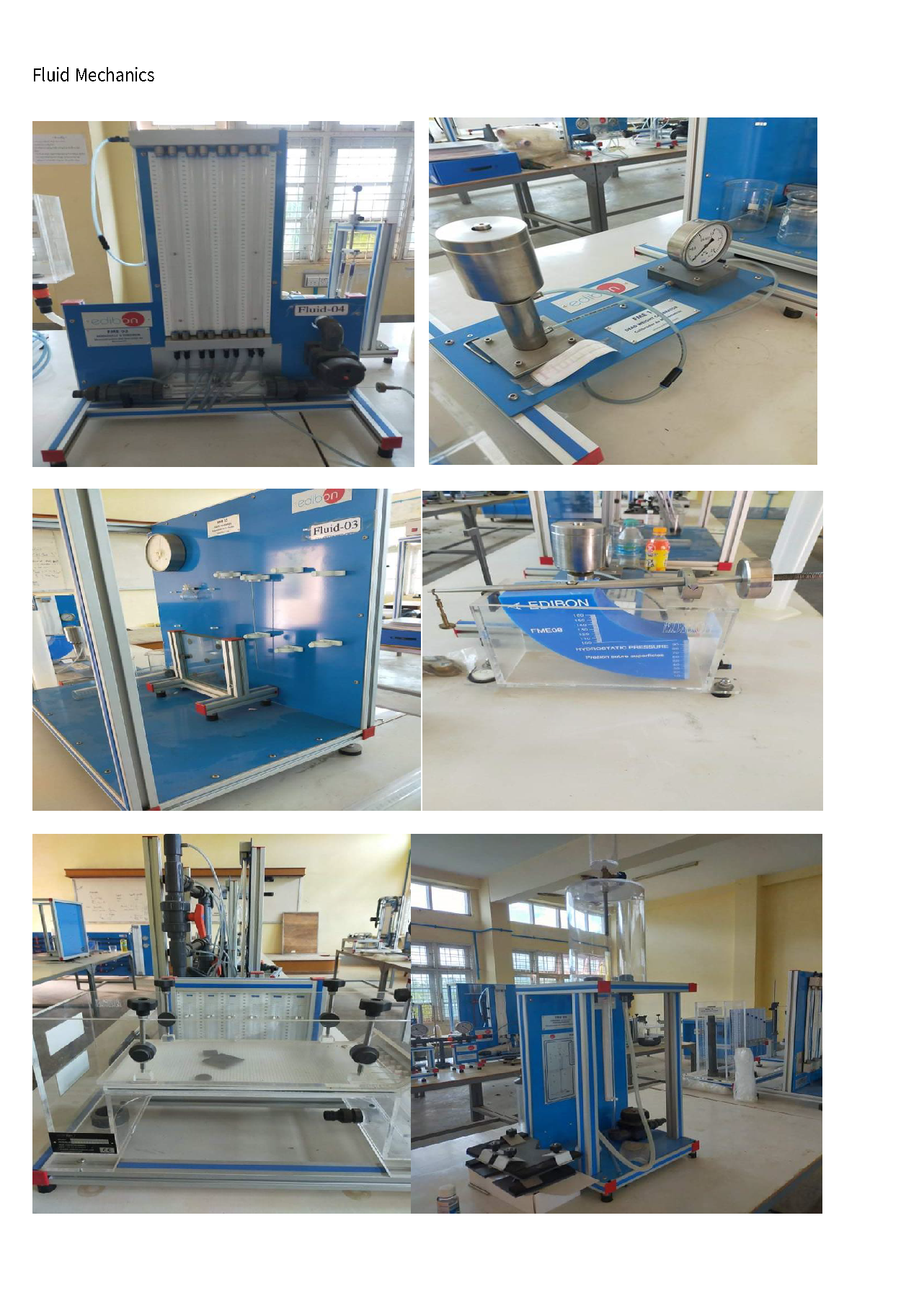
Teaching Materials (Hydraulics and Water Resources lab)
Hydraulics and Water Resources Engineering (HWRE) is one of the research fields of Civil Engineering. It is concerned with the flow and conveyance of fluids, principally water. This area of civil engineering is related to the design of bridges, dams, channels, canals, levees and environmental engineering. Hydraulics and Water Resources lab includes fluid flow, behaviour of real fluids, hydrology, pipelines, open channel hydraulics, mechanics of sediment transport, physical modeling, hydraulic machines, and drainage hydraulics.
The following equipments provides for Hydraulics and Water Resources lab:
• Hydrostatic Bench and Fluid Unit
• Sediment Transport Demonstration Channel
• Mobile Bed and Flow Visualization Unit (workingsection:2000mm×610mm)
• Laminar flow visualization and analysis Unit
• Width inside moulding: 606mm
Length of glass plates: 892mm
Distance between glass plates: 3.2mm
Sinks/sources: eight tappings in seven positions
• Flow Channel Section: 300mm×450mm and 7.5m length
• Computer Controlled Unit for Transient Drainage
• Sedimentation tank
settling tank:1000 x 400 x 200mm
Sediment sump tank capacity:120 litres
Water flow meter range: 0.5-5 l/min
Sediment suspension flow meter range: 0-2 l/min
Pump flow rate: 25 l/min at 5m head
Motor: 0.1kW
• Hydrologic Systems, Rain Simulator and Irrigation Systems unit (2×1m)
• Filterability Index Unit
• Ground water flow Unit
Tank: Fiber Glass
Piezometer: Range: 0 to 155mm
• Drainage and Seepage Tank
The following equipments provides for Hydraulics and Water Resources lab:
• Hydrostatic Bench and Fluid Unit
• Sediment Transport Demonstration Channel
• Mobile Bed and Flow Visualization Unit (workingsection:2000mm×610mm)
• Laminar flow visualization and analysis Unit
• Width inside moulding: 606mm
Length of glass plates: 892mm
Distance between glass plates: 3.2mm
Sinks/sources: eight tappings in seven positions
• Flow Channel Section: 300mm×450mm and 7.5m length
• Computer Controlled Unit for Transient Drainage
• Sedimentation tank
settling tank:1000 x 400 x 200mm
Sediment sump tank capacity:120 litres
Water flow meter range: 0.5-5 l/min
Sediment suspension flow meter range: 0-2 l/min
Pump flow rate: 25 l/min at 5m head
Motor: 0.1kW
• Hydrologic Systems, Rain Simulator and Irrigation Systems unit (2×1m)
• Filterability Index Unit
• Ground water flow Unit
Tank: Fiber Glass
Piezometer: Range: 0 to 155mm
• Drainage and Seepage Tank
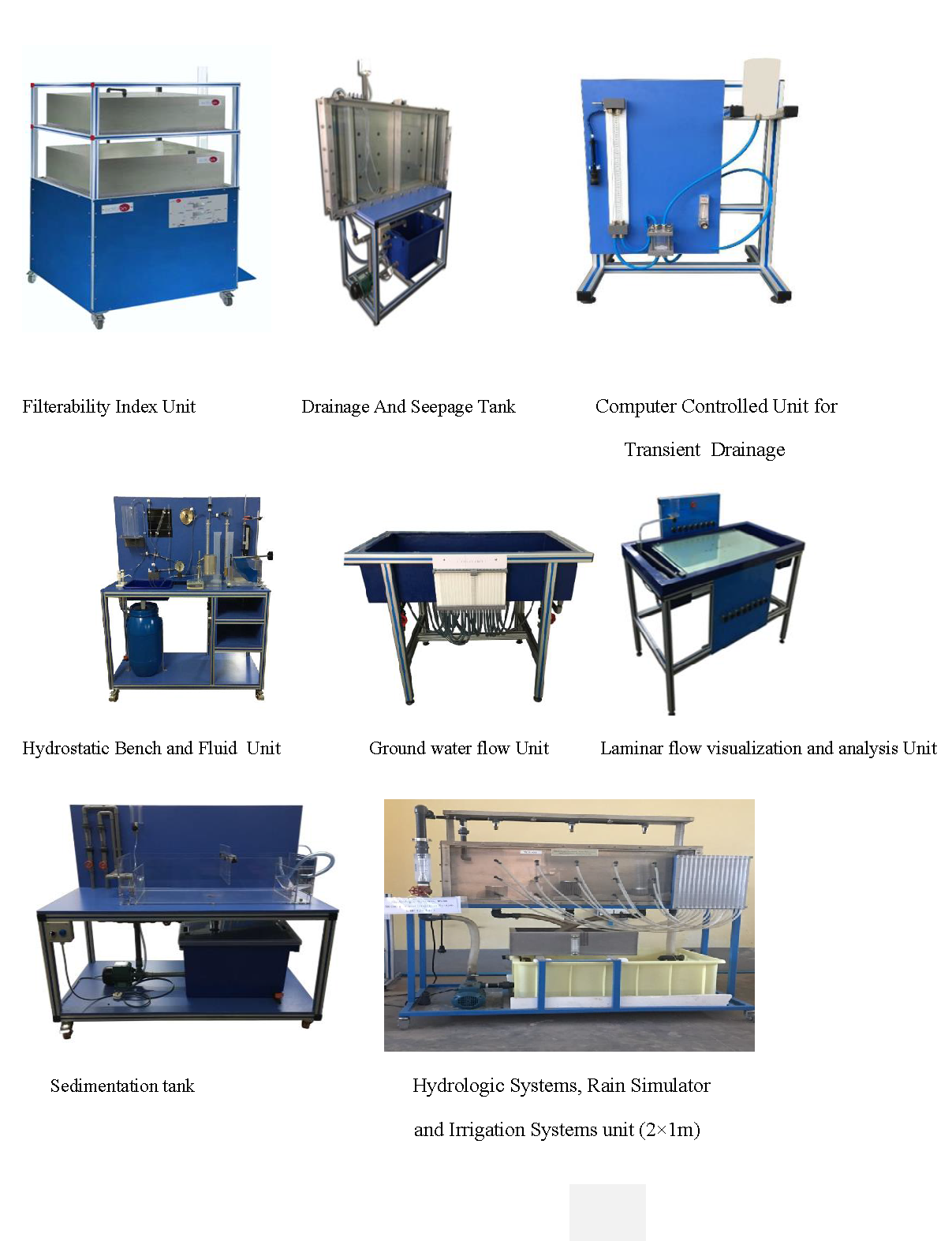
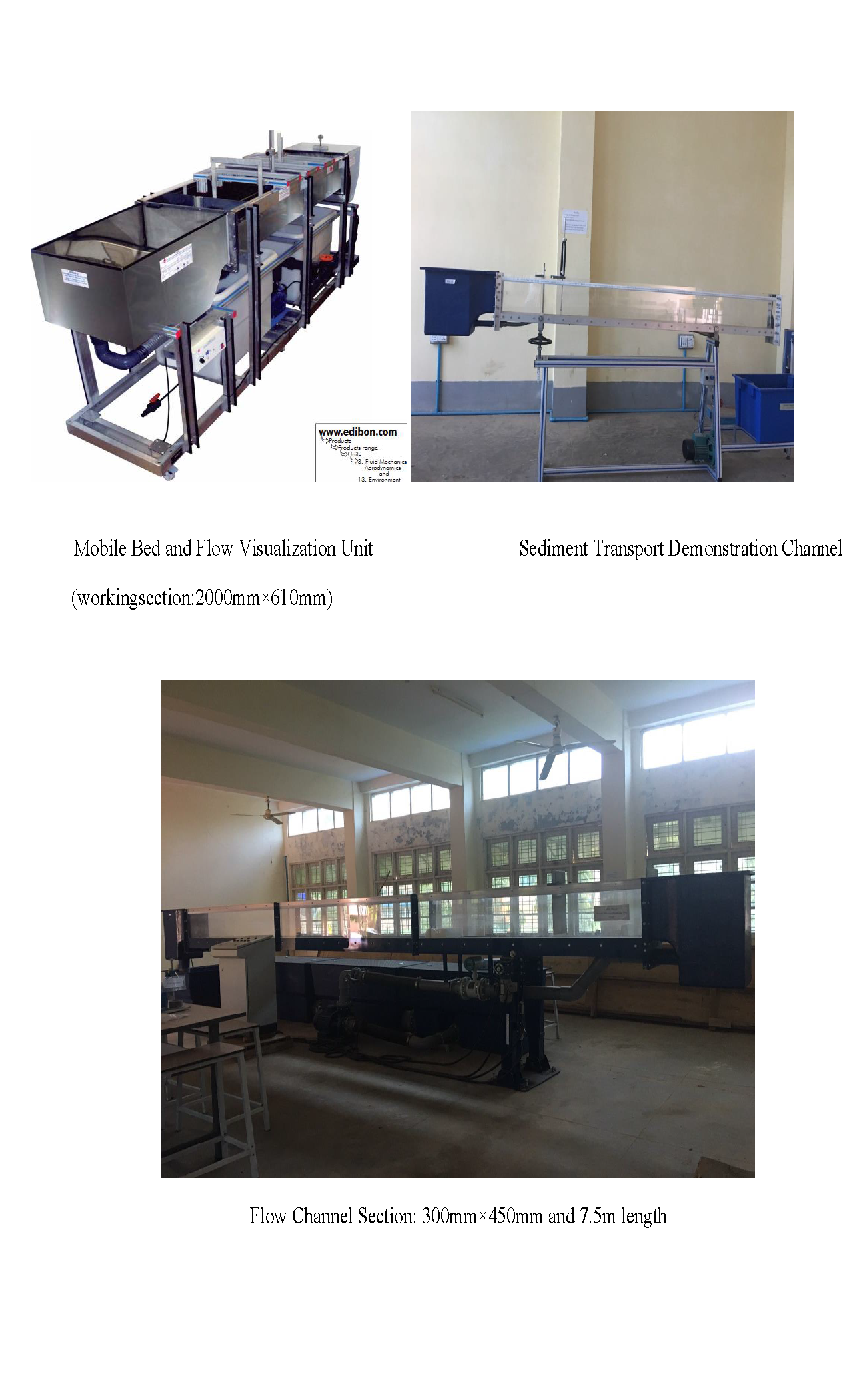
Teaching Materials (soil lab)
For engineering purposes, soil is defined as an uncemented aggregate of mineral grains and decayed organic matter with liquid and gas in the empty spaces between the particles. Soil is used as a construction material in various civil engineering projects and it supports structural foundations. Thus, civil engineering must study the properties of soil.
Soil mechanics is the branch of science that deals with the study of the physical properties of soil and the behavior of soil masses subjected to various types of forces.
The following tests provide for soil lab:
(i) Liquid limit and plastic limit of a soil
(ii) Water content determination
(iii) Particle size distribution curve method (sieve analysis)
(iv) Particle size analysis hydrometer method
(v) Standard proctor test
(vi) CBR Test 50 machine test
(vii) Constant head apparatus
(viii) Falling head apparatus
(ix) Digital direct shear test
Soil mechanics is the branch of science that deals with the study of the physical properties of soil and the behavior of soil masses subjected to various types of forces.
The following tests provide for soil lab:
(i) Liquid limit and plastic limit of a soil
(ii) Water content determination
(iii) Particle size distribution curve method (sieve analysis)
(iv) Particle size analysis hydrometer method
(v) Standard proctor test
(vi) CBR Test 50 machine test
(vii) Constant head apparatus
(viii) Falling head apparatus
(ix) Digital direct shear test
University lecturers or educators teach or demonstrate using the above lab equipments in each subject for the whole course of Civil Engineering.